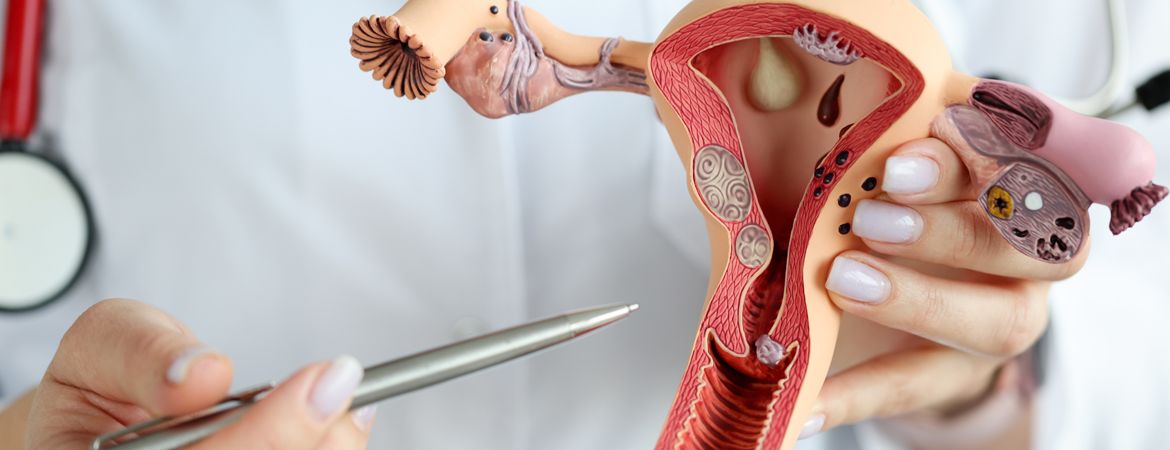
If you are experiencing pelvic pain or abnormal bleeding, you may have an ovarian cyst. This condition can be concerning, but it’s important to understand the causes, symptoms, and available treatment options. In this comprehensive guide, you’ll find everything you need to know about ovarian cysts.
What is an ovarian cyst?
An ovarian cyst is a fluid-filled sac that forms on or inside the ovary. These cysts can be benign or malignant and can vary in size, from small cysts just a few millimetres in diameter to larger ones several centimetres across. They are common in women of childbearing age and are often asymptomatic, though they can sometimes cause pelvic pain or abnormal bleeding.
Symptoms to watch out for.
Although many ovarian cysts are asymptomatic, it is important to monitor any changes in your body. The most common symptoms include pelvic or abdominal pain, abnormal bleeding, nausea and vomiting, a feeling of fullness or pressure in the lower abdomen, and pain during sexual intercourse. If you experience any of these symptoms, it is important to consult your doctor for proper diagnosis and treatment.
THE EVOLUTION OF OVARIAN CYSTS
When diagnosed, an ovarian organic cyst must be treated as complications can arise, causing often intense pelvic pain and requiring urgent treatment.
Ovarian torsion
Ovarian torsion occurs when an ovary twists on its axis, cutting off its own blood supply. The most common symptom of ovarian torsion is sharp pain in the lower abdomen or pelvis. The pain can be sudden or gradual and may be accompanied by nausea, vomiting, and/or fever.
Treatment for ovarian torsion involves surgery to untwist the ovary.
Intra-cystic haemorrhage
Ovarian intra-cystic haemorrhage is a bleeding disorder characterised by the accumulation of blood within ovarian cysts. It is often associated with severe abdominal pain and may lead to the rupture of an ovarian cyst. This condition can occur in both premenopausal and postmenopausal women.
Intra-cystic ovarian haemorrhage is usually caused by the rupture of an ovarian follicle (the sac containing an egg), leading to bleeding within the cyst. This type of haemorrhage can be life-threatening if it occurs within the abdomen or pelvis, where it may cause severe internal bleeding.
Ovarian abscess
An ovarian abscess is a condition characterised by the presence of an abscess or accumulation of pus in the ovary. This may result from an infection spreading from the fallopian tubes or the uterus. It can also occur when bacteria enter through the abdominal wall or vagina and travel to the ovaries.

Ovarian cyst: everything you need to know
Possible Causes
Ovarian cysts can have several causes, including hormonal imbalances, infections, ovulation disorders, a family history of ovarian cysts, and lifestyle factors such as smoking and obesity. In rare cases, they may be linked to more serious conditions such as ovarian cancer. It is important to consult a doctor to determine the underlying cause of your ovarian cyst and to develop an appropriate treatment plan.
How to diagnose it
The diagnosis of an ovarian cyst can be made through a pelvic examination, an ultrasound, or an MRI scan. Your doctor may also carry out blood tests to check hormone levels and rule out the possibility of ovarian cancer. If an ovarian cyst is diagnosed, your doctor may recommend regular monitoring to see if it resolves on its own or requires treatment. In some cases, surgery may be needed to remove the cyst.
Treatment options
Treatment options for ovarian cysts depend on the size, type, and symptoms associated with the cyst. In many cases, they disappear on their own without treatment. However, if the cyst is large, causes pain or heavy bleeding, or is suspected to be cancerous, surgical intervention may be required to remove it. In some cases, hormonal medications may be prescribed to help reduce the size of the cyst or prevent the formation of new cysts. Your doctor will discuss the appropriate treatment options for your individual situation.

